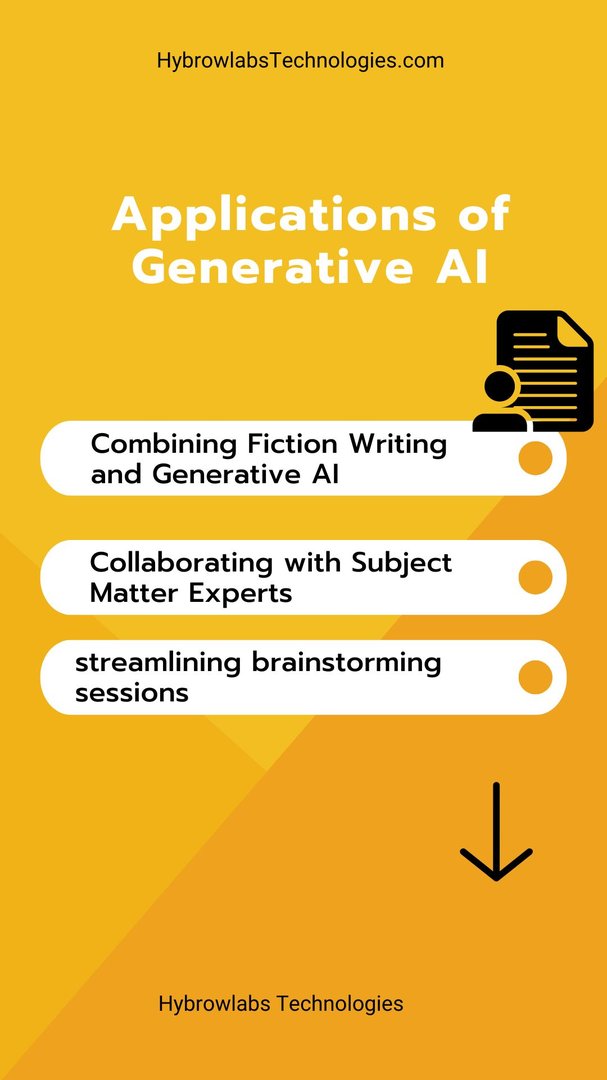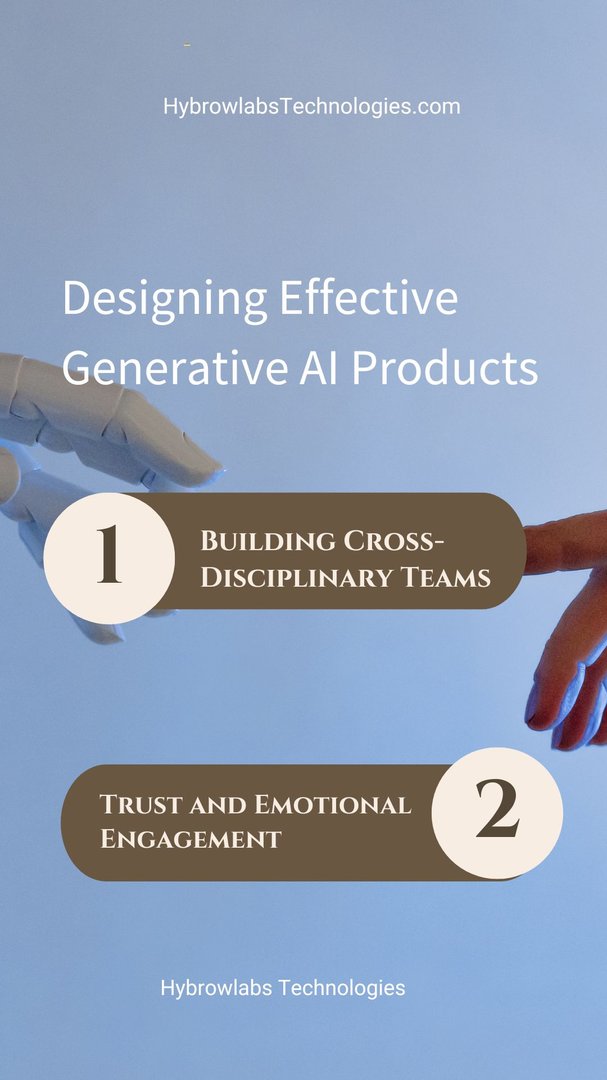The world of Generative AI is rapidly transforming, and product owners are at the forefront of this evolution. In this article, we delve into the dynamic world of Generative AI for product owners, exploring its various dimensions, design principles, real-world examples, and new paradigms that are shaping the landscape. As AI technologies continue to advance, the integration of generative AI into products becomes an exciting avenue for innovation, efficiency, and creativity. This article aims to provide insights, guidance, and inspiration for product owners navigating this transformative journey.
In the rapidly evolving landscape of technology, the article "Navigating the Frontier of Generative AI: A Guide for Product Owners" holds immense value for individuals responsible for crafting and enhancing products. This comprehensive guide is tailor-made to provide product owners with a strategic roadmap, empowering them to harness the potential of Generative AI to the fullest. Here's how this guide is particularly beneficial for product owners:
Insights into Emerging Possibilities

As the technology ecosystem evolves, product owners are often tasked with keeping up with the latest trends and innovations. This guide offers a thorough exploration of Generative AI, shedding light on its dynamic dimensions, design principles, and real-world applications. By understanding the possibilities presented by Generative AI, product owners can identify new avenues for product development and enhancement.
Inspiration for Innovation
Innovation is a driving force behind successful products. The guide's exploration of real-world examples and case studies demonstrates how Generative AI can be creatively integrated into products. These examples serve as inspiration for product owners, sparking ideas for how they can infuse their own products with AI-powered creativity, efficiency, and unique functionalities.
II. Examples of Generative AI in Action

A. Auto Muse Project: Combining Fiction Writing and Generative AI
The story of the Auto Muse Project exemplifies the power of combining subject matter expertise and generative AI prowess. Overcoming the constraints of token window sizes with larger models has opened up new horizons for creative endeavors. The collaboration between subject matter experts and expert prompt engineers highlights the importance of assembling a diverse and skilled team. The project's success is underscored by substantial cost and time reductions achieved through AI-driven editing.
B. Collaborating with Subject Matter Experts: Lawyers and AI
The integration of generative AI with legal expertise showcases the significance of starting with output and working backward to formulate effective workflows. By engaging subject matter experts in defining the information and cognitive processes involved, generative AI can assist professionals in generating accurate and contextually relevant outputs. Articulating these workflows becomes a pivotal step in seamlessly integrating generative AI into various domains.
C. Productivity Skyrocketing: MIT Study and Personal Experiences

Research from MIT confirms the remarkable potential of generative AI in amplifying productivity. Developers leveraging generative AI tools have witnessed an astounding 37% increase in productivity. This increase goes beyond mere output; generative AI aids in streamlining brainstorming sessions, expediting content creation, and even fostering personal growth and soft skills development. The AI's ability to assist in problem-solving and ideation is invaluable in both professional and personal contexts.
III. Principles: Designing Effective Generative AI Products

A. Building Cross-Disciplinary Teams: Librarians, Linguists, Writers
Embracing the expertise of individuals from diverse backgrounds, like librarians, linguists, and writers, is pivotal in successful AI integration. The inherent understanding of language nuances and information science possessed by these professionals can greatly enhance the effectiveness of generative AI products. The value of language proficiency and communication skills cannot be understated, emphasizing the need to assemble teams with varied skill sets.
B. Trust and Emotional Engagement: Reflective Journaling Tool
In domains involving emotions and personal reflections, trust is paramount. Developing AI tools that ensure user data privacy and establish a sense of emotional engagement becomes crucial. Safeguarding user data while providing a safe space for users to express their thoughts and feelings fosters trust in generative AI applications designed to address emotional well-being.
IV. New Paradigms: Elevating Generative AI Product Design

A. Polymorphic Applications: The Evolution of Generative AI Products
The concept of polymorphic applications heralds a new era in generative AI product design. These applications encapsulate multiple functionalities within a single AI tool, catering to diverse needs. The integration of different AI capabilities into a unified platform not only enhances user experience but also opens up opportunities for innovative applications across industries.
B. Holistic Product Development: Balancing Technical and Human Aspects
Effective AI product development goes beyond technical proficiency. Holistic design considerations incorporate user experience, empathy, and emotional intelligence. Recognizing the potential for AI products to contribute to personal growth, ethical considerations, and fostering positive human interactions adds a dimension of depth to generative AI integration.
C. Ethical Considerations: Navigating AI's Impact on Society
Ethical considerations play a pivotal role in shaping the trajectory of AI integration. Addressing biases, fairness, transparency, and accountability within AI products becomes a responsibility for product owners. As AI applications touch various aspects of society, upholding ethical standards ensures positive outcomes and prevents unintended consequences.
V. Conclusion
Generative AI is ushering in a new era of innovation for product owners. By understanding real-world examples, embracing design principles, and exploring new paradigms, product owners can harness the transformative power of AI to create polymorphic applications that enrich user experiences, streamline workflows, and foster personal growth. As technology advances, the potential for generative AI to redefine industries and human interactions is limitless. Through a mindful and responsible approach, product owners can drive the rise of polymorphic applications that shape the future of AI integration.
FAQ
Q1: What is Generative AI, and how does it relate to product owners?
A1: Generative AI refers to a class of artificial intelligence techniques that involve training models to generate content, whether it's text, images, music, or other forms of data. For product owners, Generative AI presents a unique opportunity to enhance products with creative and innovative capabilities, transforming how users interact with applications and services.
Q2: How can Generative AI benefit product owners?
A2: Generative AI can offer numerous benefits to product owners. It can streamline content creation, assist in brainstorming, and even provide personalized user experiences. By integrating generative AI, product owners can enhance user engagement, improve efficiency, and open doors to entirely new product functionalities.
Q3: What are polymorphic applications in the context of Generative AI?
A3: Polymorphic applications are products that integrate multiple functionalities driven by Generative AI into a single platform. These applications can perform a variety of tasks, catering to diverse user needs. Polymorphic applications allow product owners to offer a wide range of features within a unified user experience.
Q4: Can you provide examples of polymorphic applications?
A4: Certainly. Polymorphic applications could include tools that generate content, assist in complex problem-solving, provide emotional support through conversational AI, and even offer creative ideation for users in various domains. The aim is to amalgamate different AI capabilities into a holistic product.
Q5: What are some ethical considerations when integrating Generative AI into products?
A5: Ethical considerations include avoiding biases in generated content, ensuring transparency about AI's involvement, and safeguarding user data privacy. Product owners must be vigilant about potential negative impacts, taking measures to address them and adhering to responsible AI deployment practices.



312112.jpg)


a3dc85.jpg)
.jpg)
fd8f11.png)


.jpg)
.jpg)